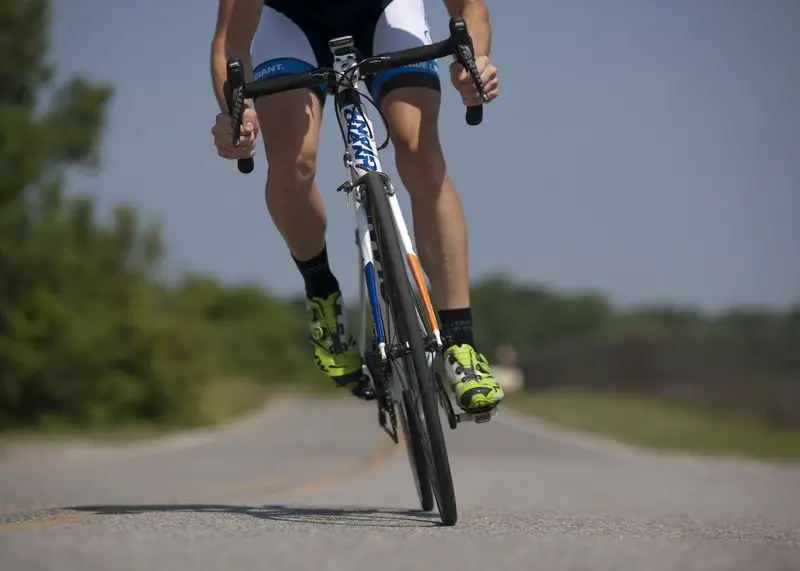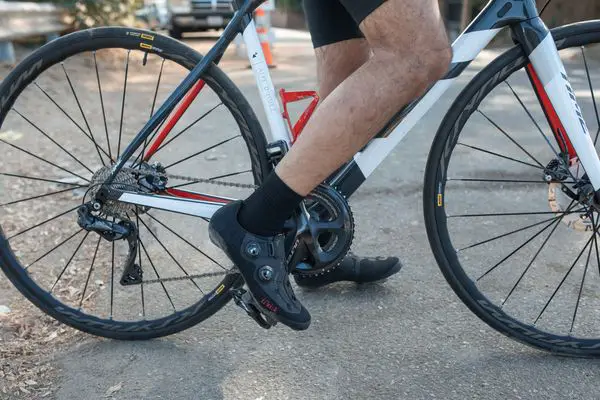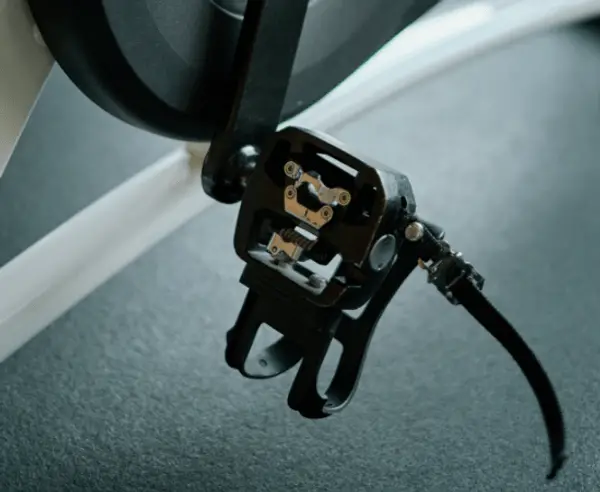Have you ever ridden a bike and had trouble pedaling? Maybe your feet felt like they were stuck to the pedals or you just couldn’t generate enough power. If this is a common problem for you, it might be time to invest in clipless pedals. These pedals can make a world of difference when it comes to your bike ride.
Check out this guide to learn more about spd pedals and how they can help you get the most out of your cycling experience!

What Are Clipless Pedals and What Do They Do?
Clipless pedals are a type of bicycle pedal that allows riders to attach their shoes directly to the pedal. This provides two main benefits: improved pedaling efficiency and increased control.
With traditional pedals, riders must push down on the pedal in order to generate power, which can be inefficient and tiring. Clipless pedals, on the other hand, allow riders to pull up on the pedal as well as push down, resulting in a more efficient pedaling action.
In addition, clipless pedals give riders greater control over their bikes. By being attached to the pedals, riders can apply pressure more evenly and precisely, making it easier to navigate tight turns or rocky terrain.
Whether you’re a seasoned cyclist or just getting started, clipless pedals can offer a number of advantages.

Do Clipless Pedals Make You Faster?
If you’re a cyclist, you’ve probably wondered if making the switch to clipless pedals will help you pedal faster and improve your performance. While there’s no definitive answer, there are some things to consider that may help you make a decision.
First, it’s important to understand how clipless pedals work. They consist of a metal or plastic cleat that attaches to your shoe, and a corresponding pedal that locks into the cleat. This design provides a more secure connection than traditional toe clips or flat pedals, which can slip and cause you to lose power. In addition, clipless pedals allow you to apply force evenly throughout the entire pedal stroke, rather than just at the downstroke. This can help you maintain a higher cadence and pedaling efficiency.
Finally, because your feet are locked into place, you’ll be less likely to suffer from fatigue and cramping during long rides. Ultimately, whether or not clipless pedals will make you faster is up to you. If you’re looking for an edge on the competition, they may be worth a try. But if you’re just starting out, flat pedals may be a more comfortable option.
How Much Power Do You Gain With Clipless Pedals?
For years, cyclists have debated the merits of clipless pedals. Some riders swear by them, claiming that they provide a major boost in power and efficiency. Others find them uncomfortable and prefer the simplicity of traditional pedals. So, what’s the truth? How much power do you really gain with clipless pedals? The answer may surprise you.
Studies have shown that clipless pedals can provide a small but measurable increase in power output. In one study, riders using clipless pedals generated an average of 4.9 percent more power than those using traditional pedals. That might not sound like much, but over the course of a long ride, it can add up to significant gains in speed and distance. And while four percent might not sound like much, keep in mind that even elite cyclists only generate about 400 watts of power on average. That means that a four percent increase in power is actually quite significant.
So if you’re looking for a way to boost your power and performance on the bike, investing in a pair of clipless pedals is well worth consideration. You might not see major gains overnight, but over time, you’ll likely find that you’re riding faster and longer than ever before.
What’s the Difference Between Clip and Clipless Pedals?
Deciding whether to ride with clip or clipless pedals is an important decision for any cyclist. Clip pedals, also known as toe clips, are now considered an old-school style of pedal. They consist of a metal or plastic cage that surrounds the front half of the foot, with a strap that goes over the top of the foot to keep the foot securely in place. These types are often seen on spin or indoor cycling bikes. They are relatively easy to get in and out of, which can be helpful when starting or stopping. However, clip pedals can be less comfortable than clipless pedals and can cause more foot fatigue over long rides.

Clipless pedals are the more modern style of pedal. They consist of a small platform attached to the bike that the cyclist’s shoes clip into. The main advantage of clipless pedals is that they provide a more secure connection between the cyclist and the bike, which can be helpful when riding on rough terrain.
They are also more comfortable than clip pedals, as they distribute the rider’s weight more evenly. However, clipless pedals can be more expensive than clip pedals and can be difficult to get in and out of.
When deciding between clip and clipless pedals, it is important to consider what type of riding you will be doing and what your budget is. Whichever type of pedal you choose, make sure to practice getting in and out of them before taking your bike out on the road.
How to Choose the Right Spd Pedals for You
When it comes to choosing the right SPD pedals for your bike, there are a few things to consider.
First, think about the type of riding you’ll be doing most often. If you’re mostly on paved roads, you’ll want a pedal with a low profile that’s easy to clip in and out of.
However, if you’re planning on doing more off-road riding, you’ll need a pedal with a wider cleat that can provide more support and stability. You’ll also want to consider the float range of the pedal. This is the amount of movement your foot can make before it becomes unclipped from the pedal.
Some riders prefer a very limited float range for greater pedaling efficiency, while others prefer a wider range for greater comfort.
Ultimately, it’s up to you to decide what’s best for your riding style. With so many options on the market, finding the right SPD pedal can seem daunting. But by keeping these few factors in mind, you’ll be able to narrow down your choices and find the perfect pedal for your bike.
In Conclusion
Do clipless pedals make a difference? The answer is both yes and no. Yes, they offer more power and efficiency because your feet are attached to the pedals. No, you can still generate just as much power without them – it’s all about how you use your body.
If you want to try out clipless pedals to see if they work better for you, go ahead! But don’t feel like you have to switch if you’re happy with your current set-up.
Sources:
How Spd Pedals Can Make a Difference to Your Bike Ride
Have you ever ridden a bike and had trouble pedaling? Maybe your feet felt like they were stuck to the pedals or you just couldn’t generate enough power. If this is a common problem for you, it might be time to invest in clipless pedals. These pedals can make a world of difference when it comes to your bike ride.
Check out this guide to learn more about spd pedals and how they can help you get the most out of your cycling experience!
What Are Clipless Pedals and What Do They Do?
Clipless pedals are a type of bicycle pedal that allows riders to attach their shoes directly to the pedal. This provides two main benefits: improved pedaling efficiency and increased control.
With traditional pedals, riders must push down on the pedal in order to generate power, which can be inefficient and tiring. Clipless pedals, on the other hand, allow riders to pull up on the pedal as well as push down, resulting in a more efficient pedaling action.
In addition, clipless pedals give riders greater control over their bikes. By being attached to the pedals, riders can apply pressure more evenly and precisely, making it easier to navigate tight turns or rocky terrain.
Whether you’re a seasoned cyclist or just getting started, clipless pedals can offer a number of advantages.
Do Clipless Pedals Make You Faster?
If you’re a cyclist, you’ve probably wondered if making the switch to clipless pedals will help you pedal faster and improve your performance. While there’s no definitive answer, there are some things to consider that may help you make a decision.
First, it’s important to understand how clipless pedals work. They consist of a metal or plastic cleat that attaches to your shoe, and a corresponding pedal that locks into the cleat. This design provides a more secure connection than traditional toe clips or flat pedals, which can slip and cause you to lose power. In addition, clipless pedals allow you to apply force evenly throughout the entire pedal stroke, rather than just at the downstroke. This can help you maintain a higher cadence and pedaling efficiency.
Finally, because your feet are locked into place, you’ll be less likely to suffer from fatigue and cramping during long rides. Ultimately, whether or not clipless pedals will make you faster is up to you. If you’re looking for an edge on the competition, they may be worth a try. But if you’re just starting out, flat pedals may be a more comfortable option.
How Much Power Do You Gain With Clipless Pedals?
For years, cyclists have debated the merits of clipless pedals. Some riders swear by them, claiming that they provide a major boost in power and efficiency. Others find them uncomfortable and prefer the simplicity of traditional pedals. So, what’s the truth? How much power do you really gain with clipless pedals? The answer may surprise you.
Studies have shown that clipless pedals can provide a small but measurable increase in power output. In one study, riders using clipless pedals generated an average of 4.9 percent more power than those using traditional pedals. That might not sound like much, but over the course of a long ride, it can add up to significant gains in speed and distance. And while four percent might not sound like much, keep in mind that even elite cyclists only generate about 400 watts of power on average. That means that a four percent increase in power is actually quite significant.
So if you’re looking for a way to boost your power and performance on the bike, investing in a pair of clipless pedals is well worth consideration. You might not see major gains overnight, but over time, you’ll likely find that you’re riding faster and longer than ever before.
What’s the Difference Between Clip and Clipless Pedals?
Deciding whether to ride with clip or clipless pedals is an important decision for any cyclist. Clip pedals, also known as toe clips, are now considered an old-school style of pedal. They consist of a metal or plastic cage that surrounds the front half of the foot, with a strap that goes over the top of the foot to keep the foot securely in place. These types are often seen on spin or indoor cycling bikes. They are relatively easy to get in and out of, which can be helpful when starting or stopping. However, clip pedals can be less comfortable than clipless pedals and can cause more foot fatigue over long rides.
Clipless pedals are the more modern style of pedal. They consist of a small platform attached to the bike that the cyclist’s shoes clip into. The main advantage of clipless pedals is that they provide a more secure connection between the cyclist and the bike, which can be helpful when riding on rough terrain.
They are also more comfortable than clip pedals, as they distribute the rider’s weight more evenly. However, clipless pedals can be more expensive than clip pedals and can be difficult to get in and out of.
When deciding between clip and clipless pedals, it is important to consider what type of riding you will be doing and what your budget is. Whichever type of pedal you choose, make sure to practice getting in and out of them before taking your bike out on the road.
How to Choose the Right Spd Pedals for You
When it comes to choosing the right SPD pedals for your bike, there are a few things to consider.
First, think about the type of riding you’ll be doing most often. If you’re mostly on paved roads, you’ll want a pedal with a low profile that’s easy to clip in and out of.
However, if you’re planning on doing more off-road riding, you’ll need a pedal with a wider cleat that can provide more support and stability. You’ll also want to consider the float range of the pedal. This is the amount of movement your foot can make before it becomes unclipped from the pedal.
Some riders prefer a very limited float range for greater pedaling efficiency, while others prefer a wider range for greater comfort.
Ultimately, it’s up to you to decide what’s best for your riding style. With so many options on the market, finding the right SPD pedal can seem daunting. But by keeping these few factors in mind, you’ll be able to narrow down your choices and find the perfect pedal for your bike.
In Conclusion
Do clipless pedals make a difference? The answer is both yes and no. Yes, they offer more power and efficiency because your feet are attached to the pedals. No, you can still generate just as much power without them – it’s all about how you use your body.
If you want to try out clipless pedals to see if they work better for you, go ahead! But don’t feel like you have to switch if you’re happy with your current set-up.
Sources:
https://www.tandfonline.com/doi/full/10.1080/19424280.2016.1140817
